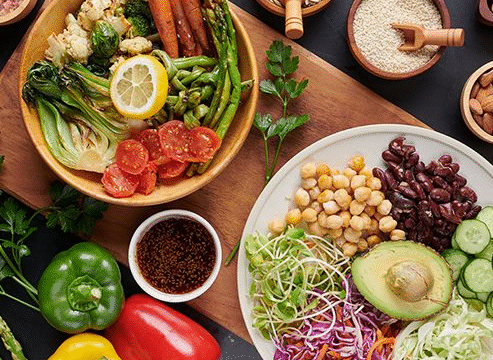Brownies are one of the most beloved desserts around the world. Their rich chocolate flavor and fudgy texture make them irresistible. However, traditional brownie recipes often rely on refined sugar and white flour, which can cause blood sugar spikes. The good news is that you can still enjoy brownies while keeping their glycemic index (GI) low. With a few smart ingredient swaps and baking tips, you can make a delicious treat that satisfies your sweet tooth without compromising your health goals.
Low GI brownies are designed to release energy slowly, preventing rapid changes in blood sugar levels. They can be part of a balanced diet for anyone who wants to manage energy levels, reduce cravings, or simply eat healthier. Making them at home is easier than you might think, and once you understand how to balance ingredients, you can customize your recipe to suit your taste.
The first step to making low GI brownies is choosing the right type of flour. Regular all-purpose flour is highly processed and quickly digested, which raises the glycemic index. Instead, use flours made from whole grains or nuts. Almond flour is a popular choice because it has a naturally low GI, adds a pleasant nutty flavor, and helps create a moist texture. Oat flour is another good alternative, offering more fiber and a subtle sweetness. For those who prefer a gluten-free option, coconut flour works well, but it absorbs more liquid, so it should be used in smaller amounts and combined with other flours for the best texture.
Next, think about the sweetener. Traditional brownies depend heavily on white sugar, which has a high GI. Replacing it with low GI sweeteners can make a big difference. Coconut sugar, for example, has a lower glycemic index and a rich caramel flavor that complements chocolate beautifully. You can also use stevia or monk fruit sweetener for a zero-calorie option, although they may alter the texture slightly. Another option is to use a small amount of honey or agave syrup, both of which are lower on the GI scale than refined sugar, but should still be used sparingly.
Chocolate is, of course, the heart of any brownie. To keep your recipe low GI, choose dark chocolate with at least 70 percent cocoa content. Dark chocolate not only contains less sugar but also provides antioxidants and a deeper flavor. Unsweetened cocoa powder is another excellent choice because it gives that rich, chocolatey taste without adding unnecessary sugar. Combining both dark chocolate and cocoa powder will create a more intense flavor while keeping the sweetness balanced.
Healthy fats play an important role in the texture and nutrition of brownies. Instead of butter, which can add saturated fat, consider using extra virgin olive oil, avocado oil, or coconut oil. These options not only lower the overall glycemic impact but also provide beneficial fatty acids that promote heart health. Avocado puree is another creative substitute that adds creaminess while supplying vitamins and fiber. The fat in these ingredients helps slow down the digestion of carbohydrates, which further contributes to keeping the GI low.
To improve the structure and moisture of your brownies, include ingredients that add fiber and natural sweetness without spiking blood sugar. Mashed bananas, grated zucchini, or even sweet potato puree can make brownies moist while providing extra nutrients. These ingredients blend well with chocolate flavors and reduce the need for added sugar. They also increase fiber content, which slows down glucose absorption.
Eggs are typically used in brownie recipes for binding and richness. If you prefer a plant-based option, flaxseed or chia seed “eggs” are perfect replacements. To make one, mix one tablespoon of ground flaxseed or chia seeds with three tablespoons of water and let it sit for about ten minutes until it forms a gel-like texture. This not only works as a binder but also adds fiber and omega-3 fatty acids.
When it comes to baking, the process remains similar to traditional brownies. Begin by melting your dark chocolate and healthy oil together over low heat until smooth. In a separate bowl, whisk your eggs or seed mixture with the chosen sweetener. Gradually combine the chocolate mixture with the wet ingredients, then fold in your flour and cocoa powder until just combined. Overmixing can make the brownies dense, so stir gently until the batter is uniform. If you like a bit of texture, consider adding chopped nuts like walnuts or almonds. They not only add crunch but also have a naturally low GI and healthy fats.
Pour the batter into a lined baking pan and bake at around 175 degrees Celsius (350 degrees Fahrenheit) for 20 to 25 minutes. The key to perfect brownies is not overbaking them. A toothpick inserted in the center should come out with a few moist crumbs but not wet batter. Let the brownies cool completely before slicing. This resting period allows them to set properly and enhances their fudgy texture.
Once your low GI brownies are ready, you can enjoy them as they are or add a few healthy toppings. A light dusting of unsweetened cocoa powder or a drizzle of melted dark chocolate can elevate their look and flavor. For a more indulgent twist, pair them with a spoonful of Greek yogurt or a small handful of fresh berries, both of which are naturally low GI and provide refreshing balance to the richness of the brownie.
Storing your brownies correctly will help maintain their texture and freshness. Keep them in an airtight container at room temperature for up to three days, or refrigerate them if you want them to last longer. You can also freeze individual portions and reheat them in a warm oven when you crave a quick treat.
One of the best things about making low GI brownies is that they can be enjoyed guilt-free while still feeling indulgent. They are ideal for anyone who wants to manage energy levels throughout the day or reduce sugar intake without sacrificing flavor. By swapping a few ingredients and understanding how they affect digestion, you can create desserts that support better health.
Experimenting with your recipe can also be fun. Try different combinations of flours and sweeteners until you find the balance you love most. You can even add a hint of cinnamon, espresso powder, or vanilla extract for extra depth of flavor. Each small change makes your brownies unique and keeps your baking experience creative.
In the end, low GI brownies prove that healthy eating doesn’t mean giving up your favorite treats. It’s all about balance, smart ingredient choices, and mindful preparation. With every bite, you’ll enjoy the comforting taste of chocolate while knowing that your dessert supports your wellness goals. Making them at home not only gives you control over what goes into your food but also adds joy to your kitchen routine. Once you master the method, you’ll find yourself baking these wholesome brownies again and again, sharing them with friends and family who will be delighted to discover how delicious healthy desserts can be.






